How do I choose a hardwood floor?
If you don’t already have a hardwood floor, the first step is to decide what kind of floor you’d like in your home.
We’ll cover the design elements in-depth in this article, but you should also be aware of some of the technical aspects of wood flooring. What good is a floor that looks nice if it doesn’t fit your lifestyle?
Hard or soft wood
There are hundreds of species of tree from which flooring can be made. How do you choose the right one?
Of course, appearance is important, but you also need to choose a type of wood that works for your lifestyle and your budget.
When it comes to the pricing of hardwood floors, the general rule is that the harder a wood is, the more expensive it is. Hardwood comes from slow-growing trees. Softwood comes from trees that grow quickly, which makes it more economical to produce.
Softwood floors, like pine or cedar, are inexpensive options. The downside, however, is that furniture or pets can scratch softwood floors. If you’ve got pets (or rowdy kids), you might want a more durable wood.
Regardless of which species of wood you choose, you also have to choose between hardwood or engineered hardwood.
Solid hardwood is exactly what you imagine: solid planks of wood.
Engineered hardwood consists of several layers of plywood laminated together with a layer of hardwood on top.
One isn’t necessarily better than the other.
Solid hardwood is necessary if you’re going to have the floor finished on-site. On-site finishing seals cracks between the boards and results in a more polished, sleek look.
The downside is that solid hardwood is susceptible to expansion and contraction due to moisture. If you’re installing in a basement (or a climate that cycles between humid and dry seasons), engineered hardwood may be the way to go; it’s highly resistant to the expansion and contraction cycle.
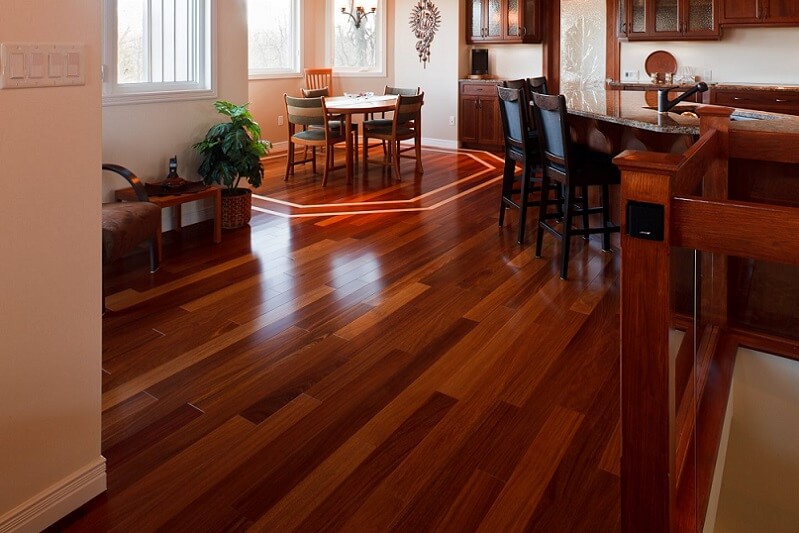
Source
Choosing a finish
There are almost as many finish options as there are species of wood available.
Oil-based finishes are increasingly popular. This finish helps protect the floor from dirt and light abuse. You’ll have to refinish the floor every few years, though, as the oil will slowly soak into the wood.
Many wood floors feature a wire brushing finish. Wire brushing gives the wood a lovely texture, but it forms tiny grooves that can trap dirt.
A polyurethane finish can help fill in some of those tiny grooves. Polyurethane finishes last a lot longer than many other options, but the application process is time-consuming. Oil-based polyurethane finishes release gases into the air for a few days after they’re applied, so no one can stay in the house during that time.
A water-based polyurethane finish is a more natural choice that’s a little easier to work with.
The manufacturer of your hardwood floors can recommend other finishing options as well.
For more about the technical side of hardwood floors, check out our comprehensive guide to wood flooring.
How do you match furniture to hardwood floors?
There’s no perfect system for matching your furniture to your floors. Hardwood floors are very forgiving; there aren’t a lot of furniture/floor combinations that are going to look bad.
But “not bad” isn’t the same as “perfect.”
Light vs dark flooring
Here’s one of the biggest rules-of-thumb for creating harmony between your furniture and your flooring:
Match dark wood floors with heavy, dark furniture and light wood floors with clean, bright furniture.
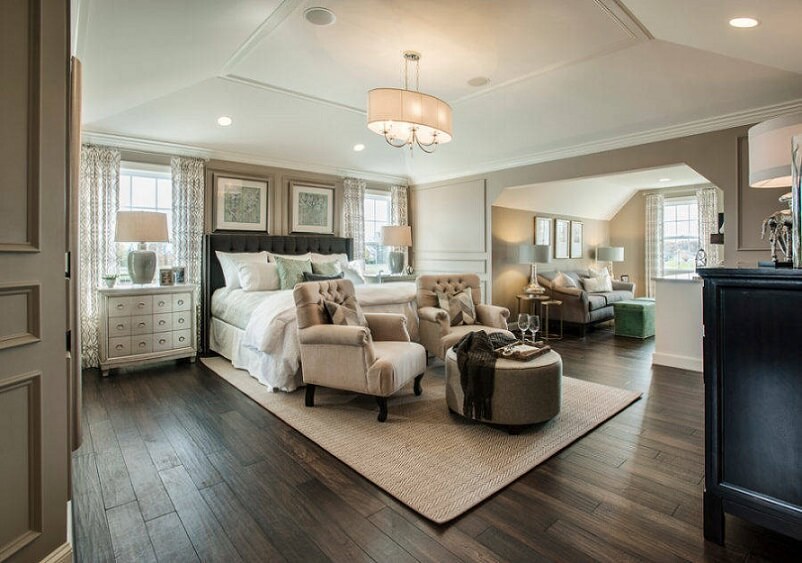
Dark wood floors are visually arresting; they tend to swallow up furniture that’s too light. In this case, we’re not talking about “light” as in colour; we’re talking about light as in Modern-style furniture with narrow legs and thin, clean lines.
Dark-coloured hardwood floors pair better with heavy, classic-style furniture with thick, shapely lines. Think of pieces that can hold their own visually rather than blending in.
Conversely, if you’re working with a light-coloured wood floor, lighter furniture is a good fit. Modern, Scandinavian style furniture with clean, simple lines works well to create a stylish, minimalist look.
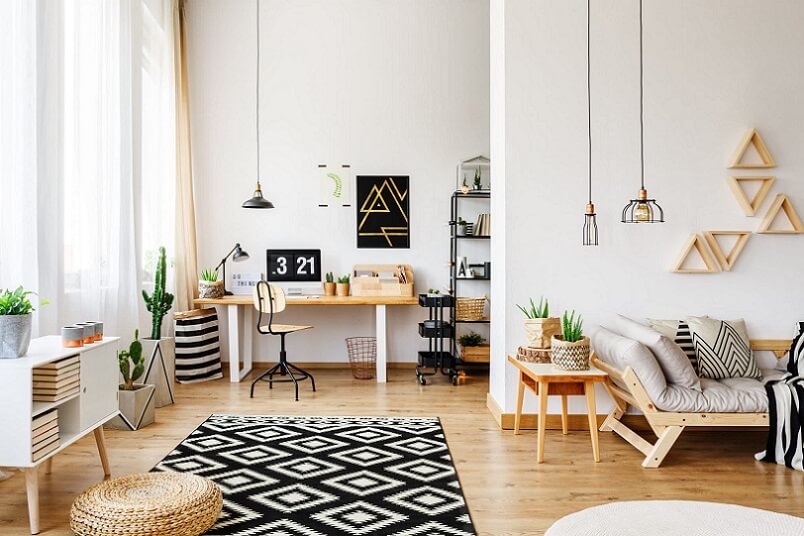
You can certainly still include dark furniture with your light floor, but make sure the furniture is visually appealing. It’s going to stand out in stark contrast against the floor.
Now, to get a little more advanced, you can incorporate area rugs.
Rugs let you bend the rules a bit; an area rug helps lighter furniture work in a room with dark floors, and vice versa.
Wood on wood
You might think that wood furniture atop wood floors is too much wood. Not so! As long as you follow one simple rule:
Vary your wood tones.
If your wood furniture is the same colour as the floor, chances are it’s not going to look as good as it could. It can work, particularly with traditional or classic styles, but it’s usually much more appealing to have the wood tones of your furniture be lighter than those of the floor (or vice versa).
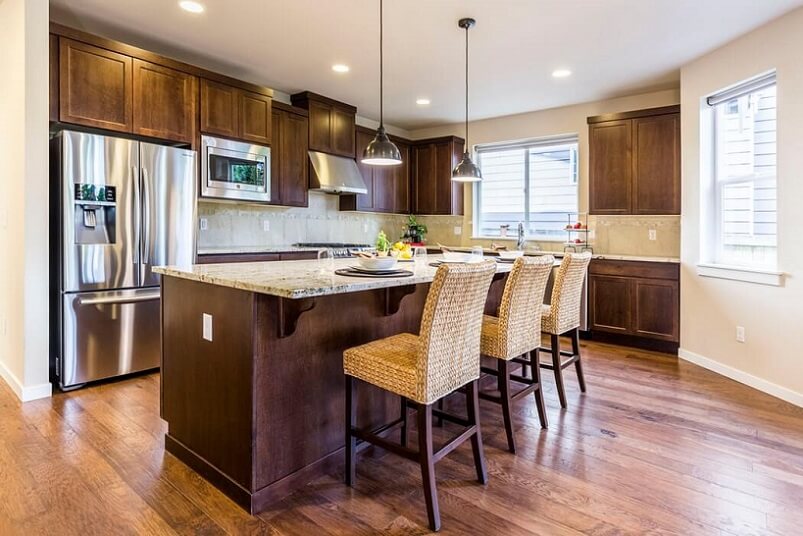
Try to limit the number of different wood shades to just 2 or 3. Too many distinct colours of wood start to look disjointed.
Keeping your style in mind
Most home designers operate with a particular style in mind: contemporary, traditional, rustic, coastal, and so forth.
If you’re working with a specific style, you want to consider how your hardwood floor with jive with it.
Species of wood with prevalent grains and knots, like pine, look great with rustic-style furniture. They look a bit out of place with ultramodern, minimalist furniture. If you’re going the contemporary route, try darker woods with less-visible grain patterns and long planks.
Are dark or light hardwood floors better?
If you’re starting from scratch, with no furniture and a new floor to choose, the light vs dark choice can be a tough one.
From a non-aesthetic perspective, light colours are great simply because they’re low maintenance. Dark floors tend to show more dirt and dust, so they require stringent cleaning. They also show damage more obviously, so families with dogs or cats might choose a light floor to hide claw-marks.
If you’re choosing a floor with visual appeal in mind, then one isn’t better than the other; it all comes down to the style you want for your home.
Dark hardwoods are perfect for a traditional, timeless look when matched with Wainscoting or crown moulding. Furniture like upholstered seating or china cabinets can complete the look.
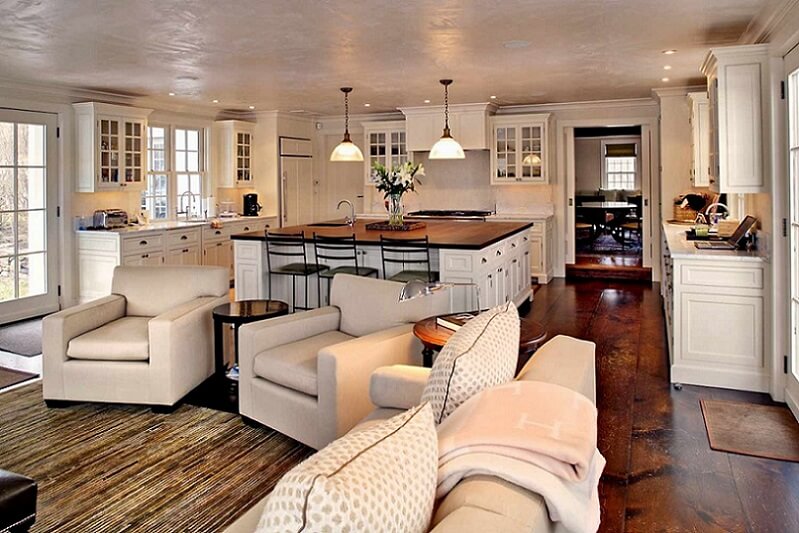
Alternatively, you can match dark wood floors with white or grey walls and trim, with minimalist modern furniture.
Meanwhile, light wood floors go great with a coastal or Scandinavian theme, for example.
Ultimately, your choice between light or dark flooring will come down to what you think looks good. Not to belabour the point, but hardwood flooring plays nice with almost any style. To visualize some options, snap a photo of the room in question and find a flooring visualization tool online.
Do wide wood planks make a room look bigger?
The width and length of the floor planks are as important as their colour.
Using the right width of board is one way to use a bit of visual trickery to make a small room appear larger. But what’s the right width?
Wide planks can make a small room appear smaller. While wide boards are sometimes favoured for the way they display knot and grain patterns, they’re best suited to larger spaces.
Narrow boards are the way to go in a small space.
While we’re on the subject, the colour of the boards also affects how they change the perception of a space: light colours make a room feel much more open.
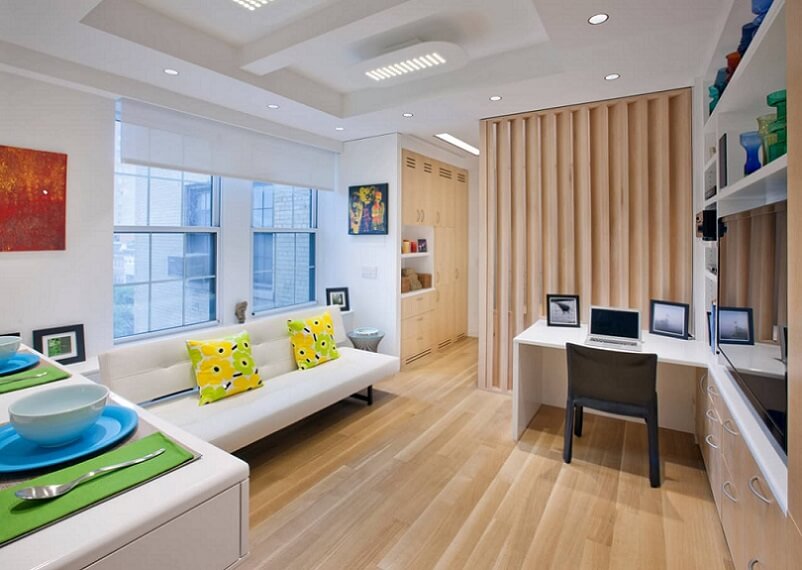
Source
For more useful tips about selecting the perfect wood flooring for your home (and lots of other topics), check out our Quick Design Tips video series with interior designer Lisa Moody.
Hardwood flooring home insurance considerations
Adding a hardwood floor or a bunch of fancy new furniture can cost a bit of money. Make sure you inform your home insurance provider of any significant renovations and check that your contents coverage is enough to protect all your new stuff.
Watch the full video
Want to learn more? Visit our Interior Design resource centre for inspiration and tips to help you create the perfect living space. Or, get an online quote in under 5 minutes and find out how affordable personalized home insurance can be.






